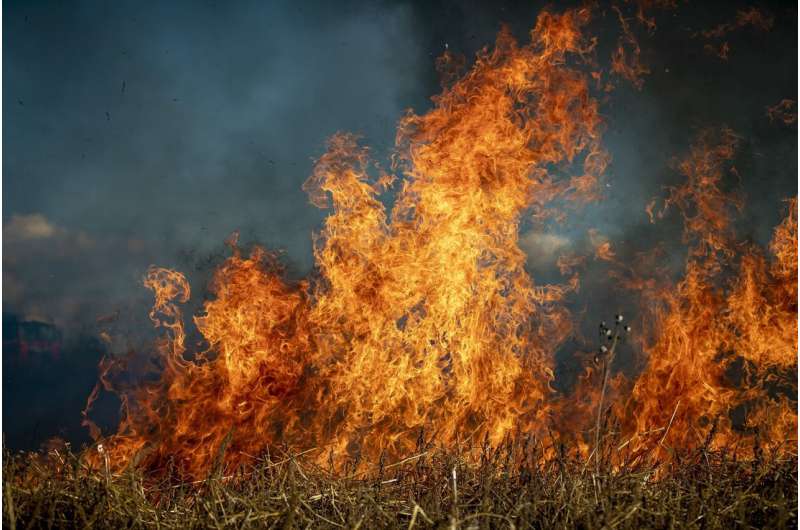This article has been reviewed according to Science X's editorial process and policies. Editors have highlighted the following attributes while ensuring the content's credibility:
fact-checked
trusted source
written by researcher(s)
proofread
For some fire-loving insects, wildfires provide the best breeding grounds

With the summer solstice and first official day of summer on June 21, hot and dry conditions have already given rise to a very active fire season across Canada.
The smoke from these fires has drifted great distances, disrupting activities and causing a nuisance and breathing hazards in communities far from its source.
But, if you happen to be an insect adapted to wildfires, tracing the smoke back to its source is what you were born to do.
Many insects are attracted to wildfires and lay their eggs in the tissues of fire-killed trees. Some of these insects are wildfire specialists and colonize the area while the fire is still actively burning.
Adaptations to forest fires
Known as pyrophilic insects because of their affinity for wildfires, these insects locate and navigate to the fire using their highly sensitive sense of smell. The smoke emitted from forest fires also provide important clues about the tree species fuelling the fire and whether, or not, the trees are suitable hosts for the insects.
As a testament to their co-evolution with fire, some species, like the Australian fire beetle, have even evolved sensory organs capable of detecting infrared light emitted from wildfires. These infrared sensors help the insects contend with the unpredictable and dangerous conditions of a typical wildfire, allowing them to avoid hot spots that might be lethal.
About 50 to 60 known insect species are pyrophilic. This list is made up mostly of beetles and flies but also includes a few true bugs and a single species of wasp called the cedar wood wasp (Syntexis libocedrii).
Little is known about their role in the ecosystem but some pyrophilic species help initiate recovery after the fire by breaking down decaying trees. Others are associated with pyrophilic fungi that are rarely found outside of recent burns.
Although a recent study suggests that some of these fungi are already present in a dormant state when the fire erupts through, pyrophilic insects may also play a role in transmission of pyrophilic fungi to burns. These fungi provide a habitat for many insect species and assist in cycling nutrients that helps facilitate regrowth in the burn.
Heat-sterilized soils
Why these insects are the first to arrive at the fire only to disappear shortly after is also not well understood. However, new research suggests that this peculiar behavior may have evolved to increase offspring survival.
Forest soils are normally chalk-full of small micro-arthropods like mites that readily devour insect eggs. But the extreme heat from wildfires dramatically reduces invertebrate numbers in soils, effectively sterilizing the soil.
Pyrophilic insects capitalize on this short window of opportunity and lay their eggs in the heat-sterilized soil before mites and other invertebrates recolonize the burn.
This temporary reprieve from egg predation explains part of why pyrophilic insects race to the fire. Comparing reproductive outputs in burnt and unburnt soils, the new study showed that this strategy can increase the number of offspring by 80 percent.
Other studies have also noted that the extreme heat and smoke of the active fire helps protect adults from predation during reproduction and egg-laying.
But once this window of opportunity closes, pyrophilic insects must seek out new fires and freshly burnt areas. This explains why, within just a year or two after the fire, the insects disappear from the burnt area.
Unpredictable habitat
The unpredictability of wildfires and the need to quickly locate them means pyrophilic insects are likely impacted when humans suppress wildfires.
Fossil evidence of pyrophilic insects from regions like Britain where they are now rooted out of or extirpated, for example, demonstrates the impact of human-induced changes to fire regimes.
Changes in land-use, fire suppression and the development of large industries like forestry and agriculture have reduced wildfires in many regions. At the same time, the current fire season as well as future projections of fire behavior under climate-warming suggests that available habitat for pyrophilic insects is likely to increase.
If the spring fire season in Canada is any indication, pyrophilic insects will continue to thrive well into summer.
Provided by The Conversation
This article is republished from The Conversation under a Creative Commons license. Read the original article.![]()
















